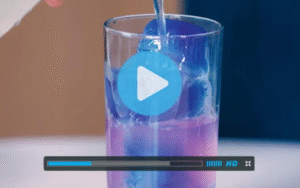Prostate health is an essential aspect of men’s overall well-being, yet many men find themselves struggling with conditions such as benign prostatic hyperplasia (BPH), prostatitis, or prostate cancer. These conditions can lead to uncomfortable and often frustrating symptoms such as frequent urination, disrupted sleep, pelvic discomfort, and fatigue. For many men, these challenges can feel like barriers to staying active and energetic.
However, physical activity and energy management are not only possible but also highly beneficial for men facing prostate problems. With the right strategies, it is possible to maintain vitality, support prostate health, and continue enjoying a high quality of life. In this article, we’ll explore effective ways to stay active and energetic while managing prostate symptoms, along with practical lifestyle tips that make a real difference.
Why Staying Active Matters for Prostate Health
Regular activity offers many benefits for men with prostate conditions. Exercise and movement are more than just about fitness—they play a direct role in symptom relief and overall wellness. Some of the key benefits include:
- Improved Urinary Function: Certain exercises, particularly pelvic floor strengthening, can help reduce urinary frequency and urgency.
- Reduced Inflammation: Physical activity lowers systemic inflammation, which is often linked to prostate problems.
- Better Sleep: Staying active helps regulate sleep patterns, making it easier to rest despite nighttime urinary symptoms.
- Boosted Energy Levels: Exercise increases circulation, oxygen delivery, and endorphin release, which naturally combat fatigue.
- Enhanced Mood and Confidence: Managing prostate symptoms can be stressful, but regular activity helps reduce anxiety and boost emotional resilience.
Practical Ways to Stay Active Despite Prostate Symptoms
The thought of exercising while dealing with discomfort or fatigue may feel daunting, but small, consistent steps can yield great results. Here are practical approaches:
1. Start With Gentle Cardio
Walking, cycling, or swimming are excellent low-impact exercises that improve circulation and energy without putting excess strain on the body. Even 20–30 minutes a day can make a big difference in prostate health and overall stamina.
2. Incorporate Pelvic Floor Exercises
Pelvic floor or Kegel exercises strengthen the muscles that support bladder control. These are especially beneficial for men with BPH or after prostate surgery. Simple routines can be done at home without equipment.
3. Strength Training for Energy
Light resistance training with weights or resistance bands helps build muscle, maintain metabolism, and improve hormone balance. Stronger muscles also support better posture and energy efficiency throughout the day.
4. Stretching and Flexibility
Prostate-related pelvic pain can often be eased with gentle stretching routines, yoga, or Pilates. These activities also enhance flexibility, reduce stiffness, and calm the nervous system.
5. Listen to Your Body
It’s essential to find the right balance. Overexertion can lead to fatigue or worsen symptoms. Start slow, increase activity gradually, and rest when needed.
Nutrition for Energy and Prostate Support
Staying active goes hand-in-hand with eating well. The right foods can support prostate health, boost energy, and reduce inflammation. Consider these dietary adjustments:
- Add More Fruits and Vegetables: Especially those rich in antioxidants such as tomatoes, berries, and leafy greens.
- Choose Healthy Fats: Omega-3 fatty acids from fish, nuts, and seeds help reduce inflammation and support hormone balance.
- Stay Hydrated (Wisely): Drink enough water, but reduce fluid intake in the evening if nighttime urination is a problem.
- Limit Irritants: Reduce caffeine, alcohol, and spicy foods, which can aggravate urinary symptoms.
- Prioritize Whole Grains and Lean Proteins: These provide lasting energy and stabilize blood sugar levels.
Managing Fatigue While Staying Active
One of the most common challenges men face when managing prostate symptoms is fatigue. Here’s how to maintain energy:
- Get Consistent Sleep: Aim for 7–8 hours of quality rest, and consider relaxation techniques if nighttime urination interrupts sleep.
- Use Energy Wisely: Schedule physical activity during times of the day when you feel most energetic.
- Take Breaks: Short rest periods throughout the day prevent burnout and allow you to recharge.
- Practice Stress Reduction: Meditation, deep breathing, or light stretching can boost energy by reducing tension.
- Stay Connected: Engaging in community activities, group exercise, or social events helps maintain motivation and vitality.
Community Stories: Men Who Stayed Active With Prostate Issues
- Paul, 60: Diagnosed with BPH, Paul struggled with fatigue. By walking daily and practicing Kegel exercises, he noticed fewer urinary issues and better energy after three months.
- Robert, 65: Battling prostate cancer, Robert joined a yoga group designed for men. The combination of gentle movement and stress relief helped him stay strong during treatment.
- James, 58: After suffering from chronic prostatitis, James focused on swimming three times a week and cutting down caffeine. His pain decreased, and his sleep quality improved.
These stories show that lifestyle changes, even small ones, can lead to lasting improvements in energy and activity levels.
Combining Medical Treatment and Lifestyle Choices
It’s important to remember that lifestyle adjustments should complement—not replace—medical treatment. Men dealing with prostate conditions should:
- Follow Medical Advice: Continue prescribed treatments, medications, or therapies.
- Communicate With Doctors: Share exercise and diet plans with healthcare providers for safety and customization.
- Use Health Apps: Digital health tools can track symptoms and progress, providing valuable data for discussions with doctors.
This integrative approach ensures the best possible outcomes while maintaining a high quality of life.
Final Thoughts
Staying active and energetic while managing prostate symptoms may feel like a challenge, but it’s absolutely possible. Through gentle exercise, smart nutrition, proper rest, and stress management, men can reduce discomfort, regain energy, and improve overall health.
The key is consistency—small, daily efforts add up to long-term benefits. By combining lifestyle changes with medical guidance, men can take control of their prostate health and continue living vibrant, energetic lives.
No matter where you are in your journey, remember: your prostate health does not define your life—you do. With the right tools and habits, you can stay strong, active, and full of energy.
>>> Backyard weed fixes enlarged prostate & provides complete relief



